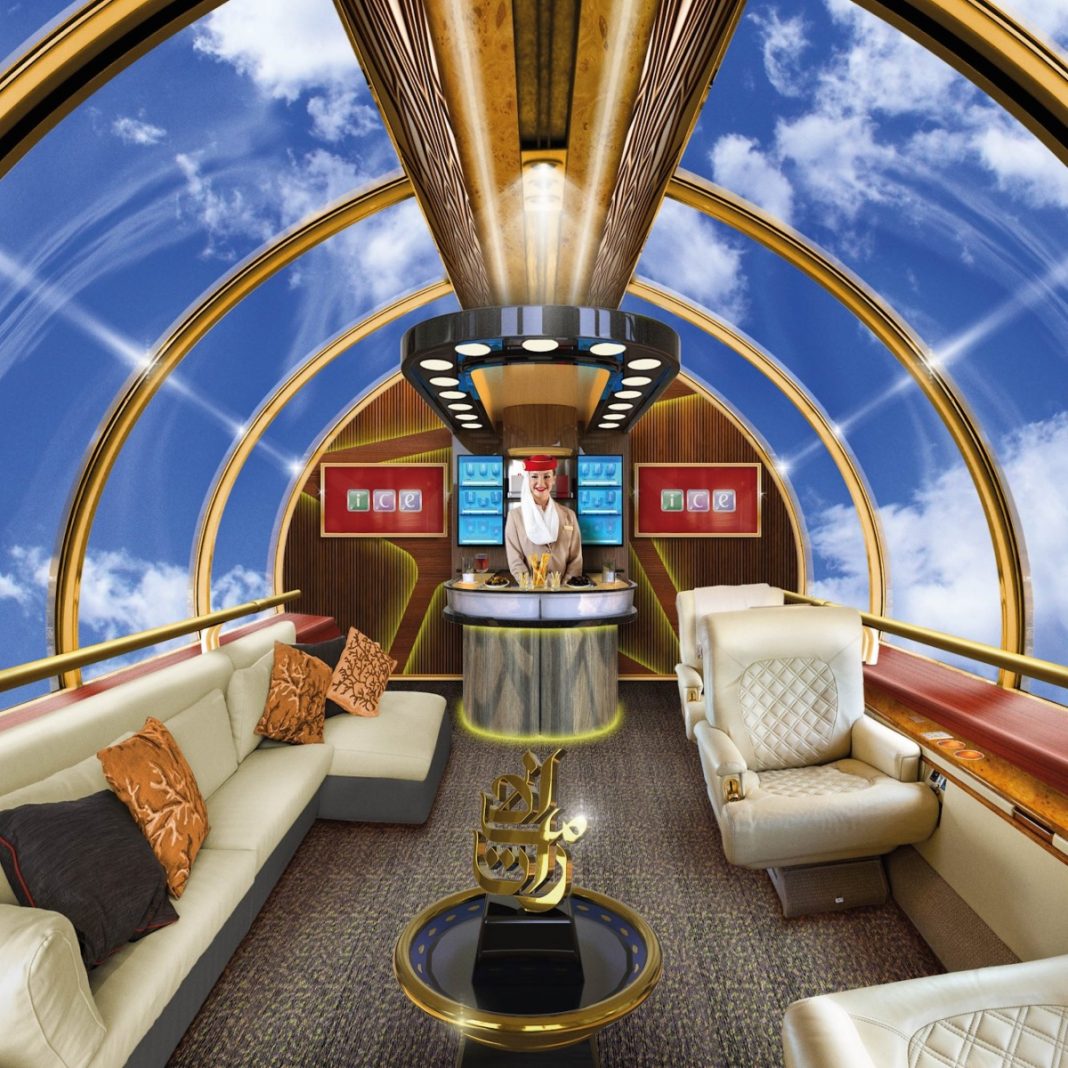Why don’t aircraft have a glass or transparent roof that traps sunlight during the day or becomes a stargazing platform at night? Such a question may seem silly, but its closer to the truth than you might realize.

Is it even possible?
Instead of starting with the merits of such a design, we should discuss if it is even possible for aircraft to have a sunroof. The core structural problem would be that such a large window (or large enough to be useful) would make the overall pressurization of the aircraft more difficult.
Bigger windows require more structural framing, making the aircraft heavier and costing more in fuel to run. That is, until the introduction of composite materials like on the 787.
However, improvements in technology have allowed bigger and larger windows over the years (compare the Boeing 787 vs. the older 777 in terms of window size) proving that wider designs are possible.
Plus, we only need to look at a fighter jets glass canopy. Generally constructed of three materials (0.5-inch thick polycarbonate, polyurethane glue to sandwich the two layers and a 0.125-inch layer of acrylic), engineers have been able to make a bubble that easily withstands speeds that commercial aircraft dream of.
So if we have the technology, why don’t we have sunroofs?
Concept designs
While no sunroofed aircraft exist today, there are a few concept designs that have come close.
First, there is an aviation firm Windspeed Skydeck. Essentially a bubble-like a fighter jet window that sits on top of the plane. Easy to build and install.

Then Emirates released this concept design for their lounges on April 1st. While a joke concept, it certainly got engineers thinking.

It would have windows at the rear of the 777X that offered unmatched aerial views.
Emirates reveals SkyLounge, the most exclusive Onboard Lounge to be introduced on its Boeing 777X fleet from 2020. A completely transparent lounge with unmatched aerial views and unparalleled luxury, Emirates SkyLounge promises window views like no other. pic.twitter.com/pwtoocM9mN
— Emirates Airline (@emirates) March 31, 2018
Why it may not work for airlines
Despite the dreams above, having a sunroof on an aircraft might not be advisable for passengers.
For one, where would you build the sunroof? For the business class passengers? For economy? Who would have access to the area to look above? Would this area mean that its a public space with no seats? Thus would the airline transport fewer passengers than the sunless competition.
Plus, imagine that you are trying to sleep on the plane, and the sunlight is pouring in. It’s hard enough without bright daylight (especially if you are jetlagged), or the risk of getting a sunburn.

Lastly, this is all assuming that there are no wires, ducts, pipes, or any other materials running through the ceiling, including the overhead bag bins.
It seems that a sunroof may not work for commercial aircraft. Private aircraft, on the other hand…
Private aircraft will have sunroofs.
There have already been several concept designs for wrap-around windows onboard private business jets.

Private aircraft don’t need to accommodate as many passengers as possible, nor have to worry about where the sunroof is.
However, there looks like the trend is moving away from windows altogether. Several firms are designing windowless aircraft that use curved OLED TV screens to give you floor to ceiling ‘views’ to the outside, without needing to compromise the aircraft.

Spike Aerospace president and chief executive officer, Vik Kachoria, says the system will provide “beautiful, full-length camera feeds from various angles. Whatever image you want to see can be displayed. You can see left or right, in front of the plane or behind it, looking down or up into the sky. It’s more of a panoramic view than the minimal view that you see out of a porthole window.”
What do you think? Do you want a sunroof onboard your aircraft? Let us know in the comments.
[ad_2]
Source link


